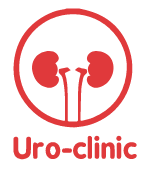🔸 It is a testicle that did not go to the place allocated to it inside the scrotum before the birth of the male child
🔸 2% to 5% of all male births suffer from a suspended testicle in one or both testes
🔸 Most of the problems are solved in the first months of the infant's life, and if they continue with the child, we can treat them through surgery, during which the testicle is transferred to the scrotum.
الم Hanging testicle is very popular with male children born before their birth date or before the completion of 37 weeks of pregnancy.
🔸 As for the testicle suspended in both testes, it is a very rare phenomenon
Symptoms of a suspended testicle are:
🔸 Not feeling the testicle in place and is the main sign of the undescended testicle
Renal colic: This is pain in the kidneys and urinary tract and appears due to stones in the kidneys or in the renal pelvis or in the ureter. Kidney pain will occur when the urinary stones block part of the urinary tract that includes the kidneys, ureters, bladder and urethra for the symptoms of renal colic are: Sudden sharp pain in the lower back and reaches the other areas on both sides of the back (in the place of the kidneys Pain during urination high fever in cases of infection 🔹 tremors or tremors 🔹 nausea and vomiting that occur in rare cases 🔹 blood in the urine even if it is not clear to the eye we can do a hidden blood test analysis Diagnosis of renal colic: - Renal colic is diagnosed using methods of imaging Z: CT scans of the kidney are examined using a relatively small amount of radiation - and in some cases the doctor may recommend a urological examination with radiography with contrast or ultrasound.
Laparoscopy or diagnostic laparoscopy: This is a diagnostic procedure used to examine the internal organs in the abdomen, and a tool called the endoscope is used, which is a long and thin tube with high illumination with a high-resolution camera in its front. The endoscope is inserted through an incision in the abdominal wall and while the camera moves in Inside the abdomen, you send the photos to the video screen attached to them, to show the internal organs of the doctor regarding the abdominal surgery .This operation may be performed on any of the abdominal organs, including: the stomach, gallbladder, small intestine, large and appendix, liver, pancreas, spleen, and esophagus, and this procedure may be necessary to treat a variety of causes, including some infections, obstruction, tumors, or diseases Inflammatory bowel 🔸 any surgical procedure after which some complications can occur, including: (bleeding - inflammation - adhesions - poor bowel movement) 🔸 features of the laparoscopic process for abdominal surgery: - the laparoscopic process is less painful than open surgery. Laparoscopy has a shorter recovery period than surgery. Endoscopic surgical incisions are smaller than conventional surgery. Also, you are less likely to get infections after the operation
